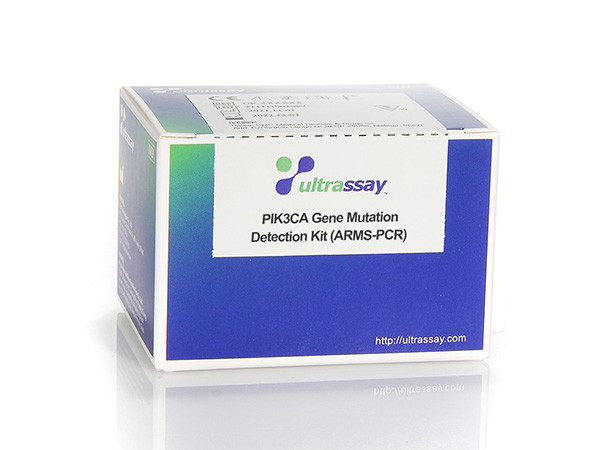Phosphatidylinositol-3 kinase (PI3K) is a catalytic kinase of inositol group phosphorylation, which is composed of catalytic subunit and regulatory subunit heterodimer. It can be divided into I, II and III according to the structure of its substrate. PI3K is a downstream signaling molecule of EGFR. It is activated by growth factor receptor tyrosine kinases (EGFR) and phosphorylates silk/threonine kinase (AKT) to up-regulate the activity of this pathway and produce a variety of biological effects, including regulation of cell proliferation, survival and cell cycle regulation.
PIK3CA gene mutation has been found in a variety of cancers (such as breast cancer, non-small cell lung cancer, etc.), the mutation rate of PIK3CA gene is 9.0%(7/79), among which codon 542, 545, 546 and 1047 are the common mutation sites reported in previous literature. The mutation status of PIK3CA gene is related to the patient’s clinical medication and prognosis. Meanwhile, HER2-positive/HR-positive breast cancer patients with PIK3CA gene mutations develop resistance to HER2 therapy. Tumor cells with PIK3CA mutations were found to be resistant to Lapatinib, a drug that targets the EGFR or ERBB2 pathways.
UltraDx PIK3CA Gene Mutation PCR Kit is used for the detection of hot spot mutations in exons of PIK3CA 542K, 545K, 545A, 545D, 545G, 546K, 546R (E9) and 1043I, 1047L, 1047R, 1047Y (E20) by fluorescent PCR. Genotypes were determined by relative Ct values. The labeled fluorescent groups were FAM, VIC and Texas Red.
Applicable sample type: human diseased tissue samples, including formaldehyde soaked or fixed tissue, high-salt soaked tissue, punctured fresh tissue, paraffin section tissue.
Applied Biosystems™ Real time PCR system 7500, ABI QuantStudio™5 Real-time PCR system, LightCycler® 480 PCR system, Bio-Rad CFX96 real-time PCR instrument. Ultrassay eQ9600 Real Time qPCR System etc.



